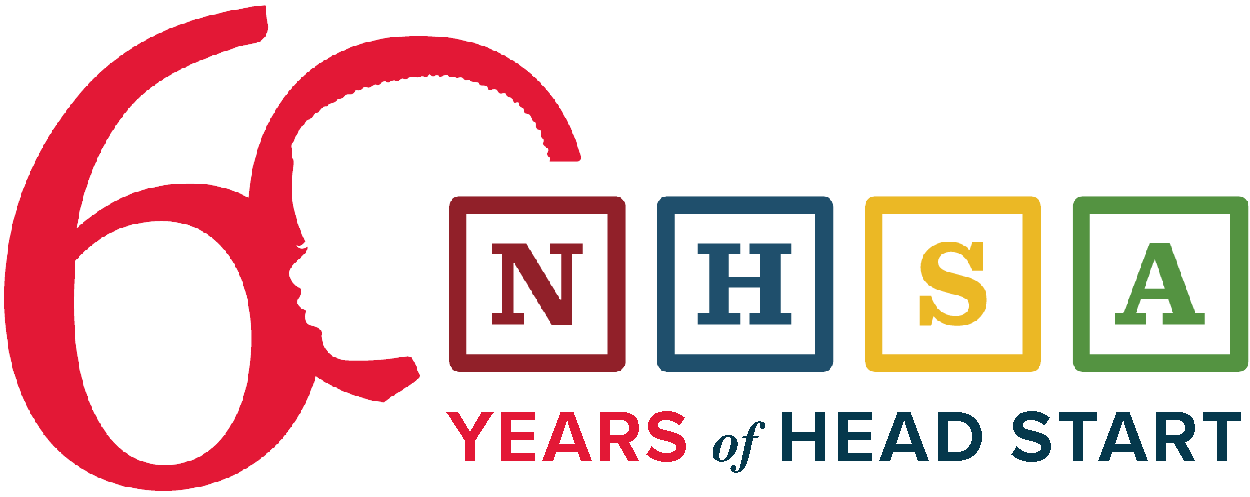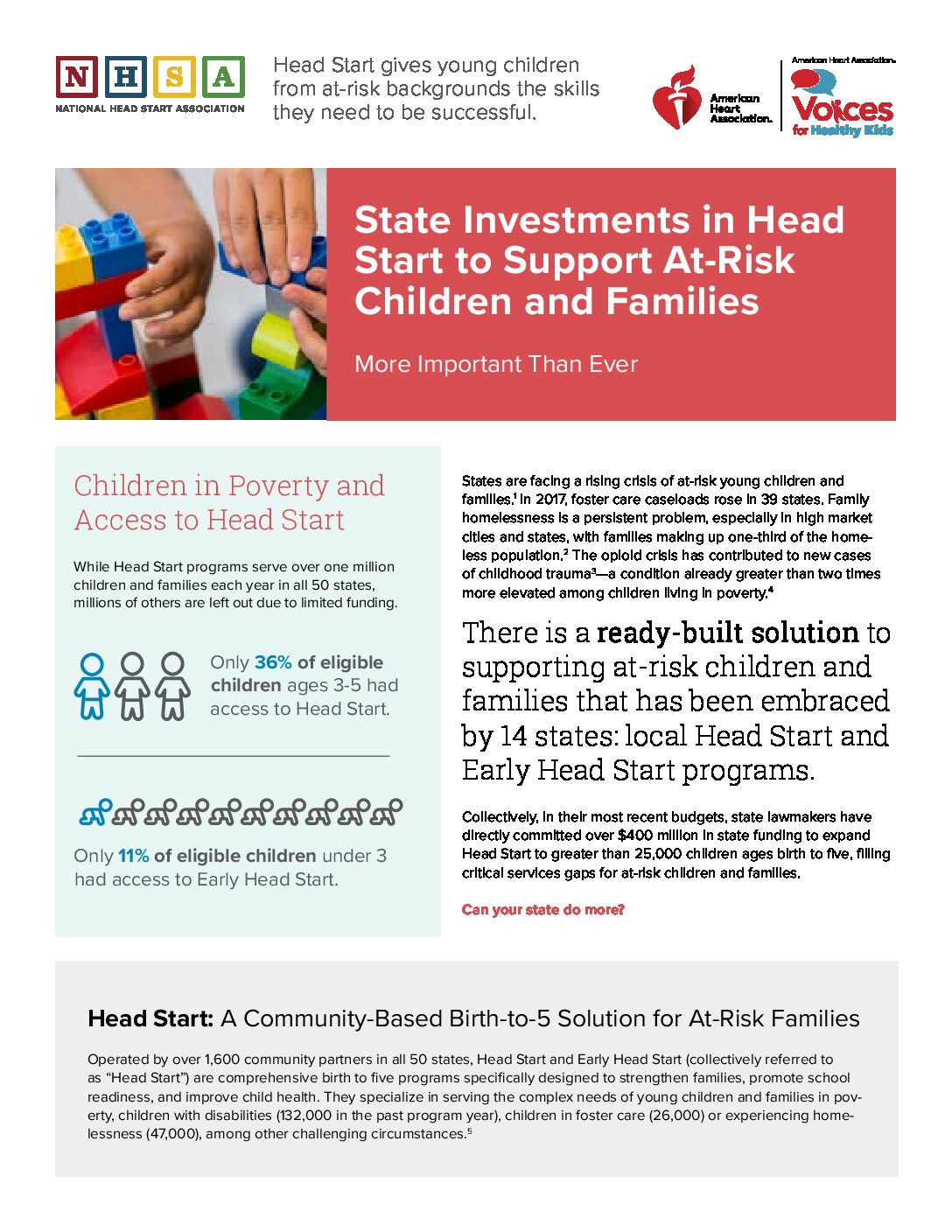States are facing a rising crisis of at-risk young children and families. In 2017, foster care caseloads rose in 39 states. Family homelessness is a persistent problem, especially in high market cities and states, with families making up one-third of the homeless population. The opioid crisis has contributed to new cases of childhood trauma—a condition already greater than two times more elevated among children living in poverty. Can state investments in support at-risk children and families?
State Investments Goes a Long Way: 5 State Examples
There is a ready-built solution to supporting at-risk children and families that has been embraced by 14 states: local Head Start and Early Head Start programs. Collectively, in their most recent budgets, state lawmakers have directly committed over $400 million in state funding to expand Head Start to greater than 25,000 children ages birth to five, filling critical services gaps for at-risk children and families.
Whether they commit to $3 million or $25 million each year, 14 states are directly investing state funds in Head Start to improve outcomes for at-risk children and families. Here are five state examples that illustrate how state investments for Head Start can go a long way in improving equity and opportunity for at-risk children and families.
1. Minnesota: Expanding Access for Infants and Toddlers
Recognizing a lack of high-quality infant and toddler care throughout the state, Minnesota invests just over $25 million each year ($50 million over two years) to expand access to Early Head Start (and Head Start) for at-risk children, including tribal and rural communities. In the most recent year, 1,078 infants and toddlers were served with state funding.
2. Oregon: Building a Pre-K System on Head Start
Oregon has built their well-regarded Oregon Prekindergarten (OPK) program on Head Start. Three-fourths of grantees are federal Head Start programs and they follow Head Start’s performance standards. In the coming two years, they have bud- geted to invest just over $200 million in OPK to serve over 7,500 low-income and at-risk children. Given the success of this model, lawmakers just decided to invest over $24 million in Early Head Start in the state.
3. Maryland: Meeting the Needs of Working Families
Maryland has committed $3 million with a focus on expanding the number of hours and days children are able to access Head Start. By extending the duration of Head Start services, Maryland helps 2,300 children and is better able to meet the needs of working families, providing their children with high quality care while they pursue education and work goals.
4. Missouri: Improving Child Care Quality
Over a decade ago, Missouri saw a need to improve the quality of care for infants and toddlers. Today, $6 million in state funding annually supports partnerships be- tween Early Head Start programs and local child care providers to help 444 children and families, especially children with incarcerated parents, children with disabilities and pregnant women.The funding not only directly benefits 444 children, it creates a ripple effect that improves the overall quality of care for the other children in the supported child care classrooms.
5. Massachusetts: Supporting Teacher-Child Relationships
Lawmakers recently dedicated $12 million in state funding to support higher teacher salaries and help programs meet their federally-required 20% funding match. Supporting the Head Start workforce benefits children and families by creating more stable and caring adult-child relationships in the classroom.

